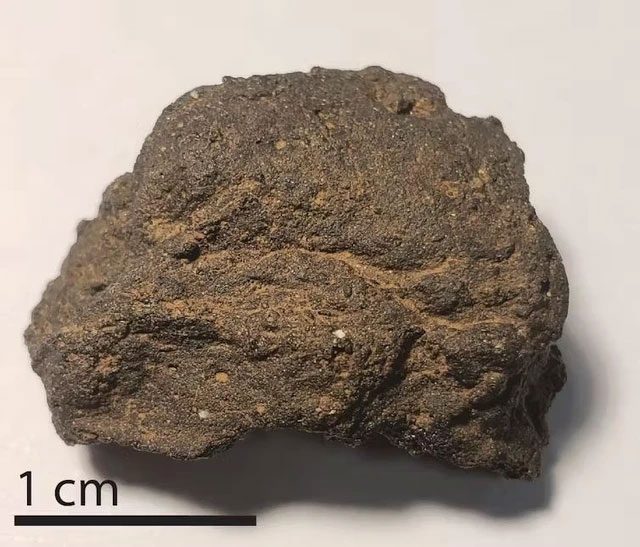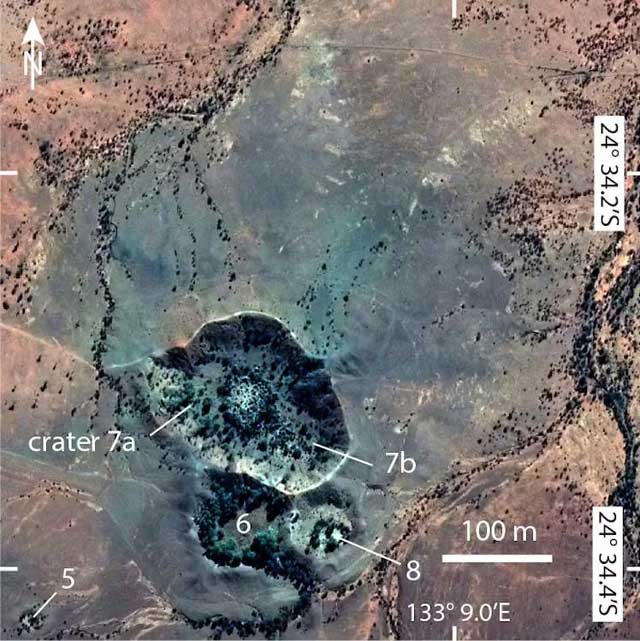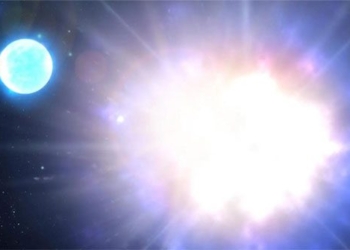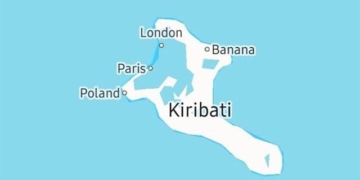An Unusual Type of Glass Found in Australia Contains Up to 10% Extraterrestrial Material.
In an article published in The Conversation, Dr. Aaron Cavosie, a geologist, geochemist, and planetary scientist from Curtin University (Australia), stated that they have collected special glass fragments that may contain a part of the core of a shattered world.

A meteorite glass fragment found in Australia containing 10% extraterrestrial material – (Photo: Geochimica et Cosmochimica Acta).
Dr. Cavosie and his colleagues analyzed glass fragments from the Henbury Crater area in Australia, a system of impact craters.
This area features 13 primary and secondary craters formed by a cosmic impact approximately 5,000 years ago.
The meteorite fragments recovered from this site belong to the iron-IIIAB class, remnants of the metallic core from an ancient world that has shattered.
This world could have been a planet, a protoplanet, or a failed planet drifting in its star system as an asteroid.

Henbury Crater consists of various primary and secondary craters of different sizes – (Photo: Geochimica et Cosmochimica Acta)
Interestingly, the violent impact of the meteorite from that other world’s core blended cosmic material with Earth materials. The extreme temperatures, pressures, and other harsh conditions from the event also contributed to the formation of unprecedented materials.
Scientists used lasers to create holes in the Henbury glass fragments, heating them into hot plasma and then analyzing them with mass spectrometry.
The results published in the scientific journal Geochimica et Cosmochimica Acta indicate that this glass is composed of locally occurring sandstone along with an unusually high content of iron, nickel, and cobalt.
The iron, nickel, and cobalt were inherited from the aforementioned mysterious world’s core.
It also contains high levels of chromium, iridium, and other precious metal group elements, which are extremely rare in most surface rocks on Earth. This serves as another testament to the cosmic origins of these glass fragments.
Calculations show that 10% of this glass is derived from melted extraterrestrial objects.
While 10% may not seem like a lot, it represents a significant treasure for scientists to study. This is a remarkably high proportion for materials generated from impact events.
In comparison, extraterrestrial material accounts for only about 0.1% in similar debris from the Chicxulub asteroid impact that led to the extinction of the dinosaurs.
The abundant extraterrestrial material in this special glass from Australia promises to help scientists understand how the core of a world operates and functions.
While we cannot directly access the Earth’s core, such discoveries will enhance our understanding of it, as celestial objects often form through specific processes.





















































